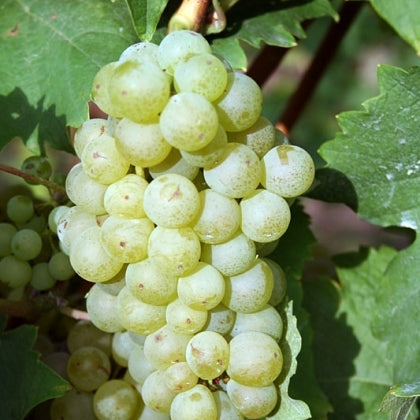General information
The Bacchus grape is a classic white wine variety developed in 1933 at the Geilweilerhof Institute for Vine Breeding in the South Palatinate. The crossing of Silvaner × Riesling × Müller-Thurgau resulted in an early-ripening grape with high must weights and low acidity. Bacchus was long popular in Rheinhessen and Franconia, and is currently experiencing a noticeable resurgence in the United Kingdom, particularly in the emerging wine regions south of London.
Grape
The grape clusters are shouldered and densely packed. The medium-sized berries are yellow-green, oval to round, and have a light muscat flavor. Growth is moderate to vigorous. Bacchus is frost-resistant, and the wood ripens beautifully towards the end of the season.
Wine
Bacchus wines are floral, fruity, and accessible. At full maturity, they produce aromatic, extract-rich wines with a distinct bouquet. The aroma and flavor are reminiscent of Scheurebe, with hints of muscat and citrus.
Cultivation advice
Bacchus thrives in cooler climates, but in very vigorous or wet locations, the berries may burst, increasing the risk of rot. An airy, well-drained location is recommended.
Preparing the vine
Soak your vine in a bucket of water for 24 hours. This allows it to soak up some water before planting.
Ground preparation
- On calcareous soil: improve with lava grit
- On sandy soil: improve with bentonite and lava flour
Planting out
Using a soil auger or spade, dig a hole 10 cm in diameter and approximately 30 cm deep. Plant the vine with the graft just above the ground, so that the plant protrudes 5 to 10 cm above the ground.
Planting distance
- In line: 1 meter
- Between rows: 1.5 to 1.8 meters






